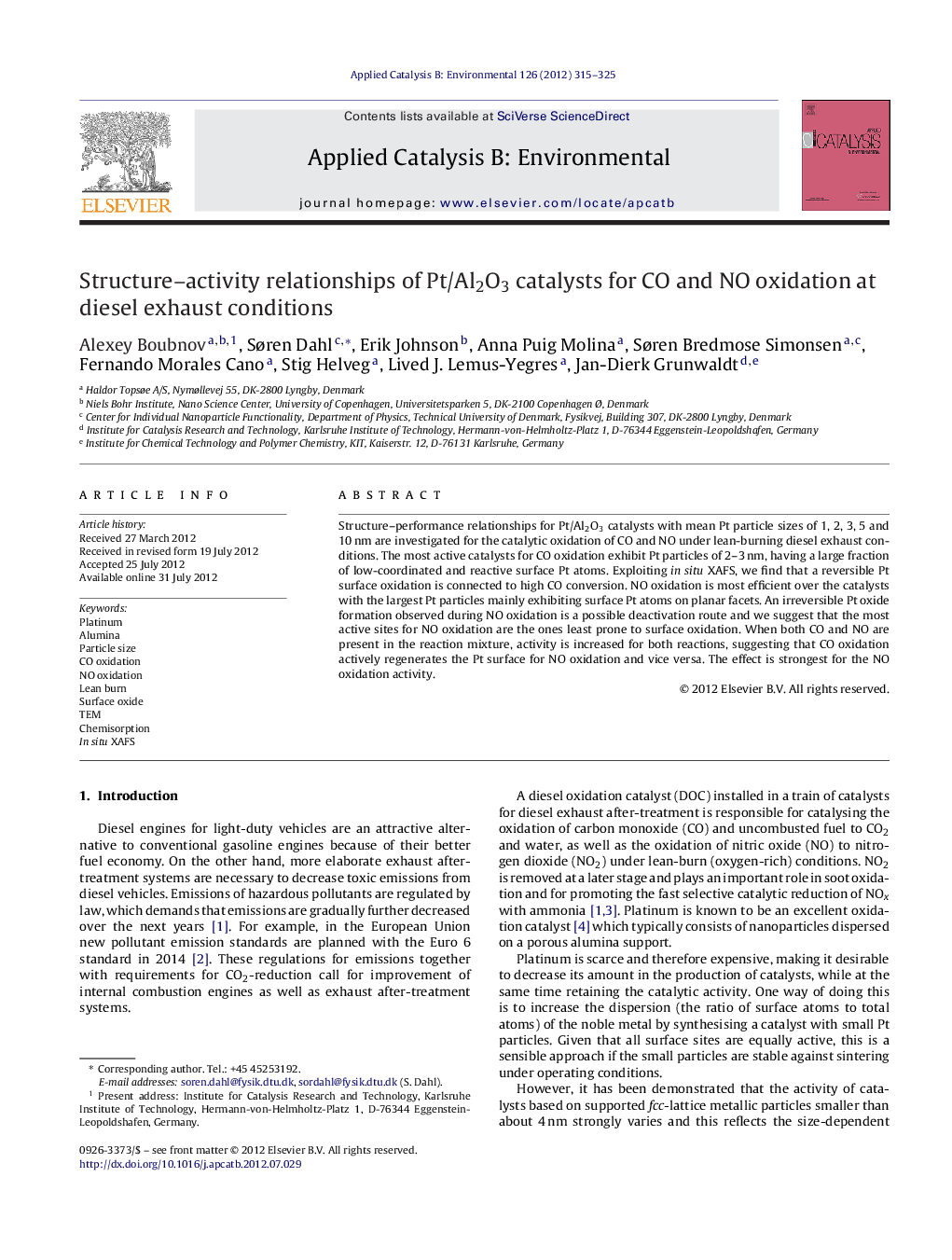| Article ID | Journal | Published Year | Pages | File Type |
|---|---|---|---|---|
| 46557 | Applied Catalysis B: Environmental | 2012 | 11 Pages |
Structure–performance relationships for Pt/Al2O3 catalysts with mean Pt particle sizes of 1, 2, 3, 5 and 10 nm are investigated for the catalytic oxidation of CO and NO under lean-burning diesel exhaust conditions. The most active catalysts for CO oxidation exhibit Pt particles of 2–3 nm, having a large fraction of low-coordinated and reactive surface Pt atoms. Exploiting in situ XAFS, we find that a reversible Pt surface oxidation is connected to high CO conversion. NO oxidation is most efficient over the catalysts with the largest Pt particles mainly exhibiting surface Pt atoms on planar facets. An irreversible Pt oxide formation observed during NO oxidation is a possible deactivation route and we suggest that the most active sites for NO oxidation are the ones least prone to surface oxidation. When both CO and NO are present in the reaction mixture, activity is increased for both reactions, suggesting that CO oxidation actively regenerates the Pt surface for NO oxidation and vice versa. The effect is strongest for the NO oxidation activity.
Graphical abstractFigure optionsDownload full-size imageDownload as PowerPoint slideHighlights▸ Lean CO and NO oxidation studied over Pt/Al2O3 catalysts with 1–10 nm Pt particles. ▸ CO oxidation fastest over 2–3 nm Pt particles with low-coordinated Pt atoms as dominant surface species. ▸ NO oxidation fastest over largest Pt particles where surface is dominated by planar facets. ▸ Pt surface oxidation promotes CO oxidation but deactivates NO oxidation. ▸ Strong promotional effect of CO on NO oxidation.
